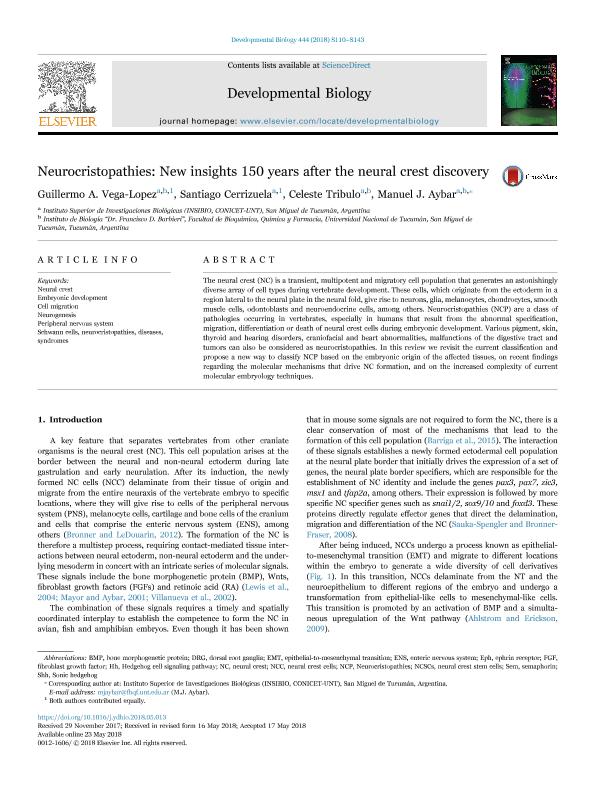Artículo
Neurocristopathies: New insights 150 years after the neural crest discovery
Fecha de publicación:
05/2018
Editorial:
Academic Press Inc Elsevier Science
Revista:
Developmental Biology
ISSN:
0012-1606
e-ISSN:
1095-564X
Idioma:
Inglés
Tipo de recurso:
Artículo publicado
Clasificación temática:
Resumen
The neural crest (NC) is a transient, multipotent and migratory cell population that generates an astonishingly diverse array of cell types during vertebrate development. These cells, which originate from the ectoderm in a region lateral to the neural plate in the neural fold, give rise to neurons, glia, melanocytes, chondrocytes, smooth muscle cells, odontoblasts and neuroendocrine cells, among others. Neurocristopathies (NCP) are a class of pathologies occurring in vertebrates, especially in humans that result from the abnormal specification, migration, differentiation or death of neural crest cells during embryonic development. Various pigment, skin, thyroid and hearing disorders, craniofacial and heart abnormalities, malfunctions of the digestive tract and tumors can also be considered as neurocristopathies. In this review we revisit the current classification and propose a new way to classify NCP based on the embryonic origin of the affected tissues, on recent findings regarding the molecular mechanisms that drive NC formation, and on the increased complexity of current molecular embryology techniques.
Archivos asociados
Licencia
Identificadores
Colecciones
Articulos(INSIBIO)
Articulos de INST.SUP.DE INVEST.BIOLOGICAS
Articulos de INST.SUP.DE INVEST.BIOLOGICAS
Citación
Vega López, Guillermo Alfredo; Cerrizuela, Santiago; Tríbulo, Celeste; Aybar, Manuel Javier; Neurocristopathies: New insights 150 years after the neural crest discovery; Academic Press Inc Elsevier Science; Developmental Biology; 444; S1; 5-2018; S110-S143
Compartir
Altmétricas




